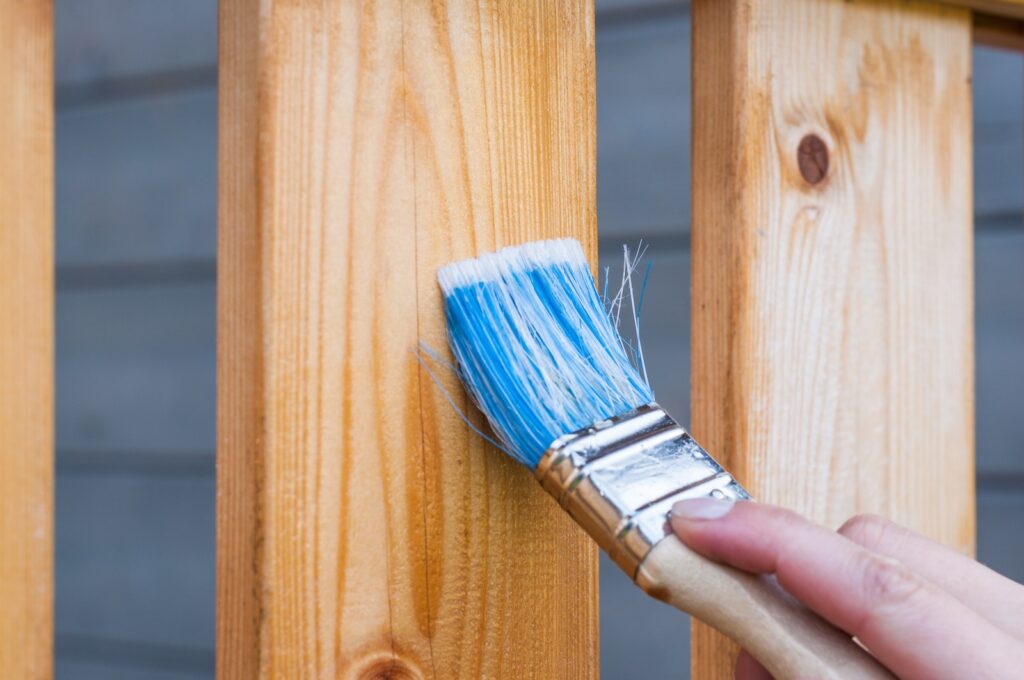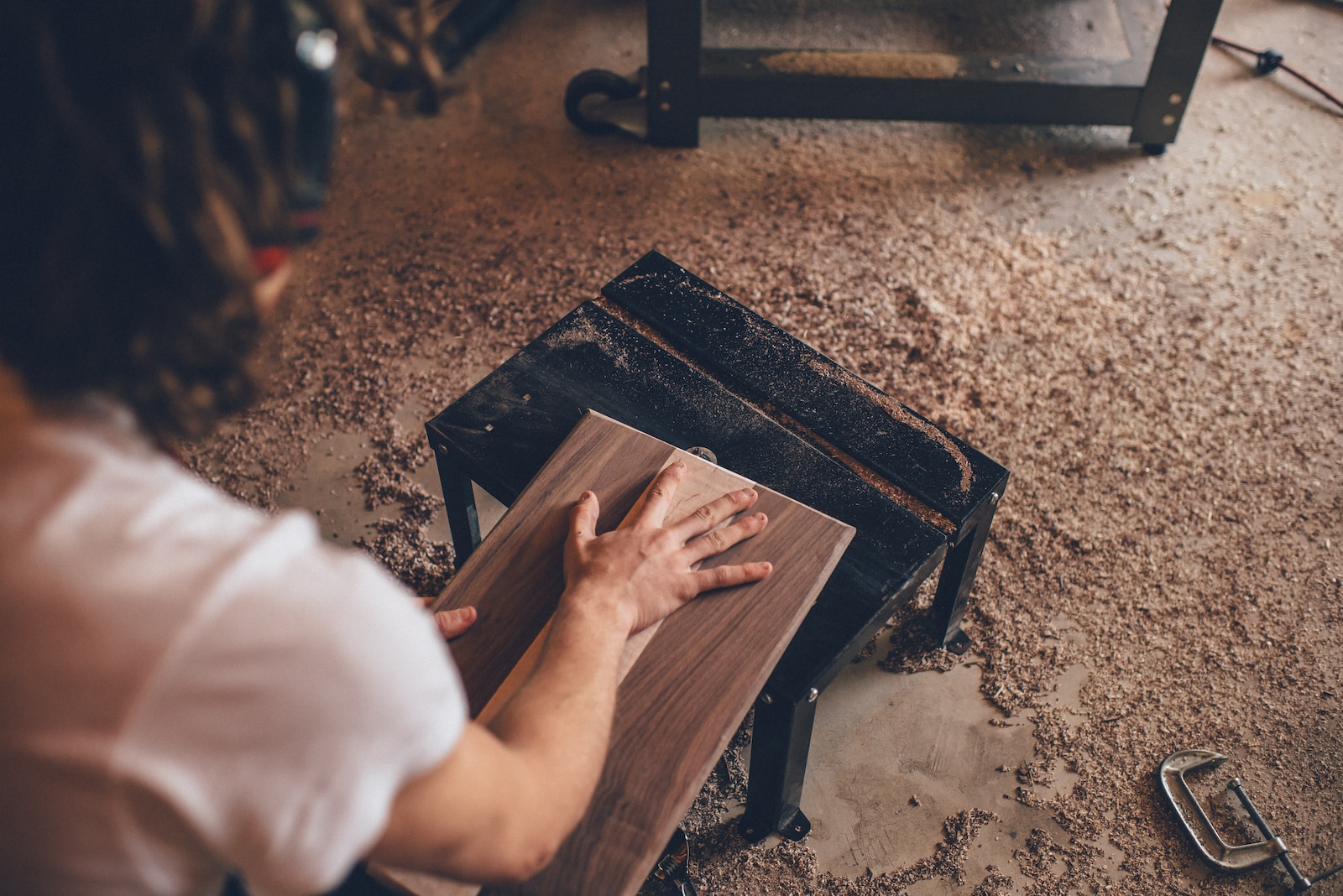Applying protective wood finishes is important, but ongoing care and maintenance is also essential for preserving the beauty and integrity of stained, sealed, painted, lacquered, oiled, and waxed wood surfaces. This article explores recommended care regimens, cleaning practices, revitalizing worn finishes, and repairing damage to keep wood looking its best.
Protecting Wood Finishes
The most effective way to care for finished wood is taking measures to prevent finish degradation and damage in the first place:
- Use coasters under all glasses, bottles, and cans to prevent moisture rings and stains.
- Place felt pads under appliances and accessories to minimize scratches.
- Use placemats and trivets on tabletops when serving hot dishes to prevent heat damage.
- Lift objects rather than dragging across wood to avoid scratching.
- Position area rugs on high traffic wood floor zones to minimize abrasive wear patterns.
- Keep wood furniture out of direct sunlight to slow UV darkening and finish breakdown.
- Maintain moderate humidity between 30-50% to prevent wood movement related finish cracks.
- Dust frequently using soft microfiber cloths to keep abrasive dirt and grit from accumulating.
Routine Wood Finish Cleaning
For ongoing cleaning without removing the finish, follow these guidelines:
Dusting – Use either a soft microfiber cloth lightly moistened with water or a dry soft cotton cloth. Avoid abrasive scrubbing pressure. Electrostatic dusters also work well.
Vacuuming – Use a brush attachment and low suction setting on wood floors or furniture to remove debris without scratching.
Mild Soap and Water – Dampen a clean soft cloth in a solution of mild dish soap diluted in warm water. Wring cloth thoroughly then wipe gently following wood grain.
Vinegar – Equal parts white vinegar diluted in warm water cuts grease and grime. Rinse immediately after wiping and don’t soak wood.
Oil Soap #CommissionsEarned – Traditional oil soap cleaners effectively cut dirt buildup. Avoid over-wetting surfaces and always wipe on direction of grains.
Antistatic Sprays – Spray onto cloth then wipe onto wood to help resist dust accumulation through static charge neutralization.
Silicone Sprays – Work as a dust repellent by forming an invisible barrier preventing particles from adhering to finish. Reapply monthly.
Avoid harsh cleaners, full strength vinegar, abrasive pads, excessive water, steam, polishes with wax that can build up, or ammonia that may damage some finishes.
Reviving Tired Wood Finishes
Over time from use some finishes can become dulled, scratched, or spotted. Here are some options for revitalizing worn but unbroken wood finish coats:
Oil Soap #CommissionsEarned – For waxed and oil-rubbed finishes, a mild oil soap scrubbing followed by fresh paste wax restores luster and depth.
Fine Steel Wool #CommissionsEarned – Gently rubbing with 0000 super fine steel wool in the direction of the wood grain helps smooth clouded, scratched, or abraded clear finishes. Apply fresh topcoat after.
Flattening Cleaners – Specialty compounds designed to level out finishes through mild abrasion. Essential step before recoating varnishes or lacquered surfaces.
Deep Cleaning – For heavy oxidation, grime, and cloudiness, use a wood cleaner with restorative oils and anti-static properties to recondition prior to protecting again.
Reapplying Topcoats – In many cases simply recoating the original finish after proper preparation will refresh the look and protection.
Color Restoration – On stained wood discolored from sunlight or wear, light sanding to reveal bare wood followed by new compatible stain matching the original tone can refresh appearance beautifully.

Repairing Finished Wood Damage and Defects
Even with proper care, wood finishes will inevitably incur some damage over their lifetime. Luckily many common defects can be repaired relatively easily:
Touch Up Markers #CommissionsEarned– Markers are available matching most stained furniture colors for concealing scratches, nicks, water marks, and small dings. Simply color over imperfections.
Scratches and Gouges – Carefully sand out minor scratches and gouges. Maintain consistency of surrounding finish. For deeper damage, fill holes with colored putty that blends when stained.
Burns – Lightly sand discoloration and blisters. Use oxalic acid solutions for severe burning or iron stains prior to sanding. Refinish.
Water Rings and Stains – Mark ring perimeter with pencil then gently sand area to remove finish. Apply moisture barrier shellac followed by finish matching rest of piece. May require redoing entire top.
Mold or Mildew – Scrub affected areas with diluted bleach solution. Neutralize with vinegar and allow wood to fully dry before refinishing sanded mold stains.
Cloudy Film Buildup – Rub with #0000 steel wool and neutral wood cleaner to remove clouding topcoat haze. Match sheen when recoating.
Wax Buildup – Multiple wax layers can cause dull hazy finishes. Use paint thinner applied sparingly with steel wool to remove excess wax prior to applying fresh coats.
Pet Damage – Scratches, dents, and stains caused by pets require sanding, filling, stain matching, and often complete refinishing of affected areas.
With some periodic maintenance and careful touch up of flaws as they occur, most finishes can be kept looking beautiful and protected for years of use. Seek professionals for extensive finish restoration needs.
For additional wood care tips check out:
By implementing prudent cleaning, maintenance, revitalizing, and repair practices, the natural beauty of wood can continue shining through any clear protective finish for generations to come.
Here are some common FAQs about caring for and maintaining finished wood with explanatory answers:
Q: What are some recommended best practices for protecting wood finishes?
A: Use coasters, placemats, rugs, and felt pads in high contact areas. Avoid direct sunlight exposure. Control indoor humidity. Dust frequently with microfiber cloths and avoid dragging objects across surfaces.
Q: What cleaning solutions can be safely used for routine maintenance on finished wood?
A: Mild dish soap and water, vinegar water mix, oil soap cleaners, antistatic sprays, and silicone sprays aid routine cleaning. Avoid excessive water, abrasives, ammonia, or steam.
Q: How can I restore the luster to a dull hazy finish?
A: Rubbing gently along the grain with 0000 super fine steel wool or using specialty flattening compounds can help revive a clouded finish prior to applying a fresh topcoat.
Q: What is the best way to touch up minor scratches or nicks in my stained wood furniture?
A: Touch up markers are available in colors matching most stain hues. Simply color over small imperfections for invisible repairs. For deeper scratches, sand and fill before re-staining.
Q: How should white rings or water stains be removed from a finished tabletop?
A: Carefully sand out the affected area then apply dewaxed shellac as a sealer/moisture barrier before refinishing just that section or the entire tabletop.
Q: Can pet-induced scratches and chew marks on wood be repaired?
A: Yes, the damage can be sanded smooth, re-stained to blend if needed, and refinished. Often the entire surface or component will need sanding and refinishing for an uniform appearance.
Q: Why does my furniture finish look cloudy and dull after years of polish and wax buildup?
A: Excessive wax layers can cause hazy dull finishes over time. Use paint thinner and fine steel wool to remove the wax buildup prior to applying new updated finish coats.
Q: What is the best way to clean mold or mildew off outdoor furniture or finishes?
A: Mix a diluted bleach cleaning solution and scrub the affected wood to remove the mold, followed by neutralizing with diluted vinegar once the mold is gone. Allow the wood to fully dry before refinishing.
Q: How often should I apply fresh coats of wax over an existing finish?
A: Paste wax should only be applied once every 4-6 months over cured finishes. Over-application of wax can cause buildup and hazing. Use it sparingly as a supplemental protective layer.
Q: What humidity level is ideal for preventing excessive wood movement and related finish cracks?
A: Maintaining a relative humidity between 30-50% year-round helps minimize wide swings that cause wood expansion and contraction that may stress already cured finishes.


